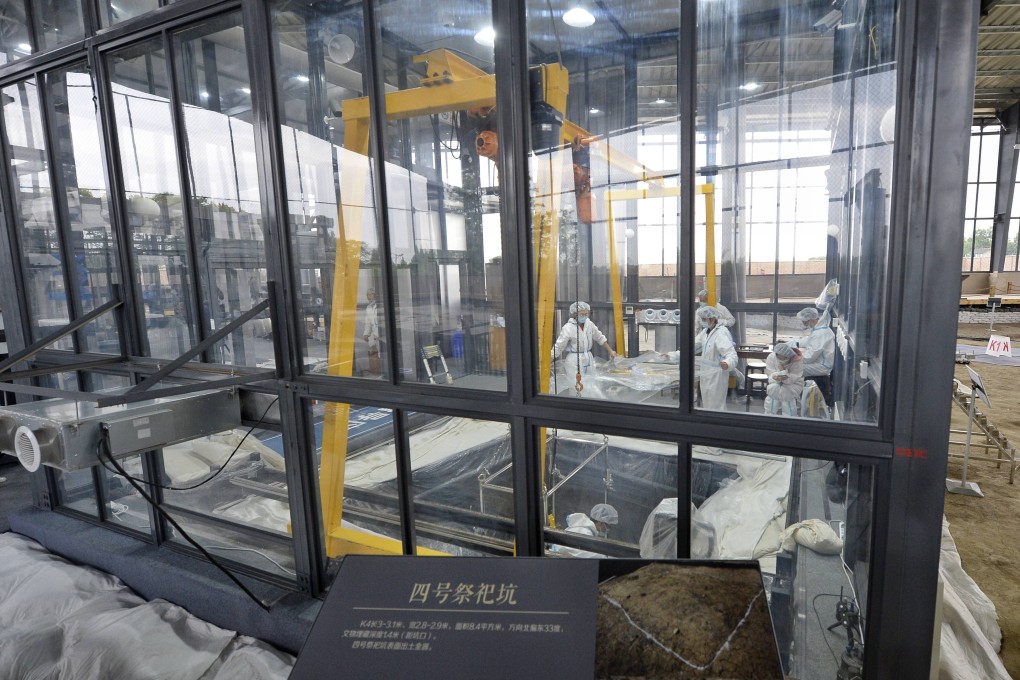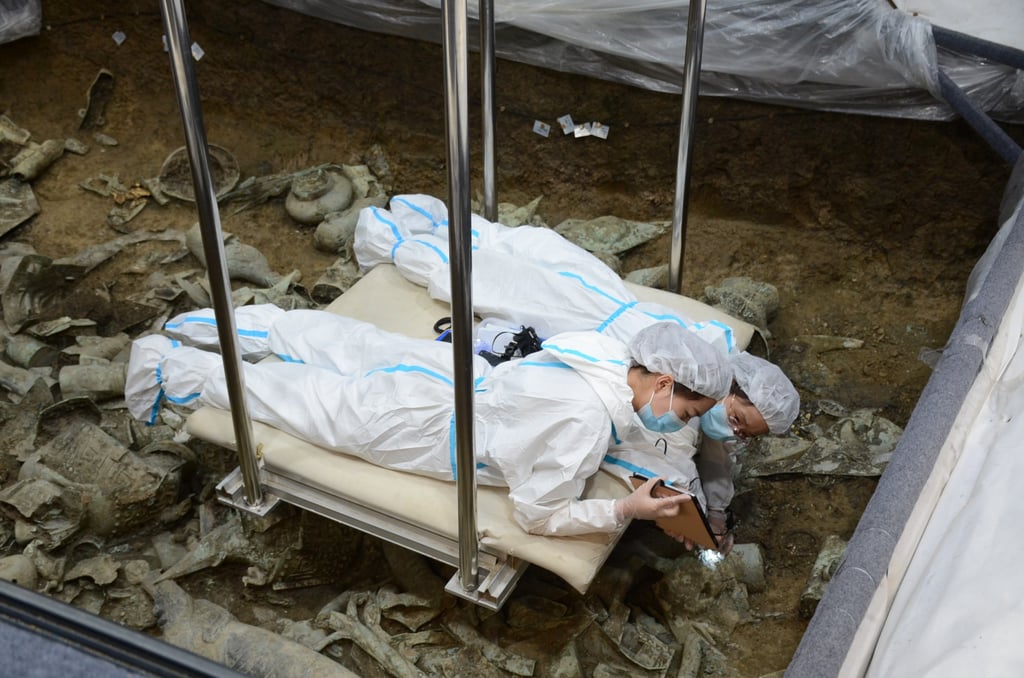How artefacts are being protected at the Sanxingdui Ruins in China
- Sacrificial pits at the site have been enclosed in glass cabins with a system to adjust temperature and humidity
- Archaeologist says the work is changing and ‘we also have a responsibility to report the latest results of our excavations to the public’

The system adjusts the temperature and humidity level so that the artefacts are kept in the same conditions after being unearthed.
Six sacrificial pits discovered at the site in Sichuan province since 2019 have been enclosed in four glass cabins equipped with the system, which keeps the temperature at between 20 and 25 degrees Celsius (68-77 Fahrenheit) and humidity at 80 per cent.

Xie Zhenbin, general engineer with the Sichuan Provincial Cultural Relics and Archaeology Research Institute, said it was the first time such a system had been used at an archaeological excavation site in China.
“If we dig up ivory without having the environment control and sterilisation system, it could become mouldy in one or two weeks,” he said. “But with this technology to protect [the finds] the ivory is well preserved.”
Some 13,000 artefacts have been discovered in the six sacrificial pits at Sanxingdui since 2020, including gold ware, jade and ivory pieces.
They include a large number of ivory tusks that were unearthed from four of the pits, including 170 found last year. But preserving ivory relics that have been excavated from such sites is a challenge.